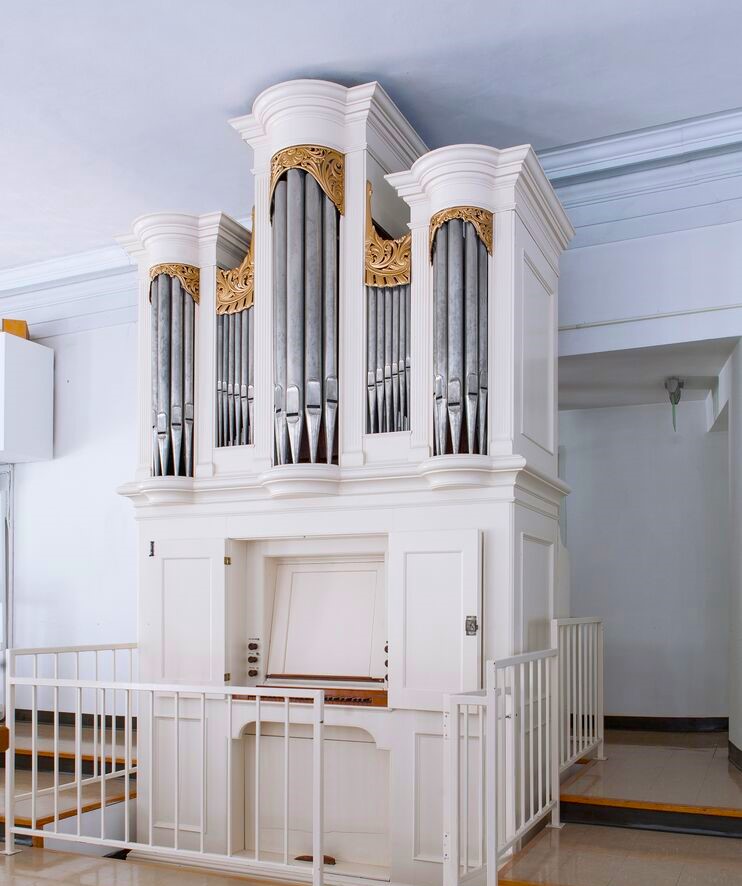East Pikeland Township, Zion Lutheran Church
| Builder | D. Tannenberg |
|---|---|
| Year | 1791 |
| Period/Style | Classical |
| Stops | 6 |
| Keyboards | 1 |
| Keyaction | tracker/mechanical |
The organ in question has undergone several relocations and restorations over the years. Initially moved to the rear gallery of a new building in 1861, it was relocated to the main floor in 1901, moved back to the rear gallery in 1972, and extensively altered during these transitions. A significant restoration was undertaken in 1998 by Patrick J. Murphy, which involved meticulous attention to historical accuracy and preservation of original materials.
During the 1998 restoration, and subsequent refurbishments, many original features were preserved or restored, including the replacement of altered components with historically appropriate counterparts. For instance, an 8' Open Diapason added in 1861 was replaced with its original 3' Quinte stop. The restoration also focused on enhancing the organ's functionality while maintaining its historical integrity. Modern elements like a new blower were added, but designed to be non-intrusive to the original structure. Hand-planed eastern white pine was used to create new windtrunks and replace missing back case panels, ensuring that new additions blended seamlessly with the old.
Further discoveries during restoration, such as newspapers from 1791 found in the bellows, have provided additional historical insights and have been preserved as part of the organ's history. The restoration included the recreation of a period-style keyboard and meticulous work on the key action and pipework, culminating in a reinstallation that not only restored the organ's function and appearance but also preserved a significant piece of musical and cultural history.
During the 1998 restoration, and subsequent refurbishments, many original features were preserved or restored, including the replacement of altered components with historically appropriate counterparts. For instance, an 8' Open Diapason added in 1861 was replaced with its original 3' Quinte stop. The restoration also focused on enhancing the organ's functionality while maintaining its historical integrity. Modern elements like a new blower were added, but designed to be non-intrusive to the original structure. Hand-planed eastern white pine was used to create new windtrunks and replace missing back case panels, ensuring that new additions blended seamlessly with the old.
Further discoveries during restoration, such as newspapers from 1791 found in the bellows, have provided additional historical insights and have been preserved as part of the organ's history. The restoration included the recreation of a period-style keyboard and meticulous work on the key action and pipework, culminating in a reinstallation that not only restored the organ's function and appearance but also preserved a significant piece of musical and cultural history.
| Manual |
|---|
| Principal dulcis 8' |
| Gedact 8' |
| Principal 4' |
| Flaut 4' |
| Quinte 3' |
| Octav 2' |
No Video/Audio samples available.
https://beta.pipeorgandatabase.org/instruments/1227
 Pipe Organ Map
Pipe Organ Map